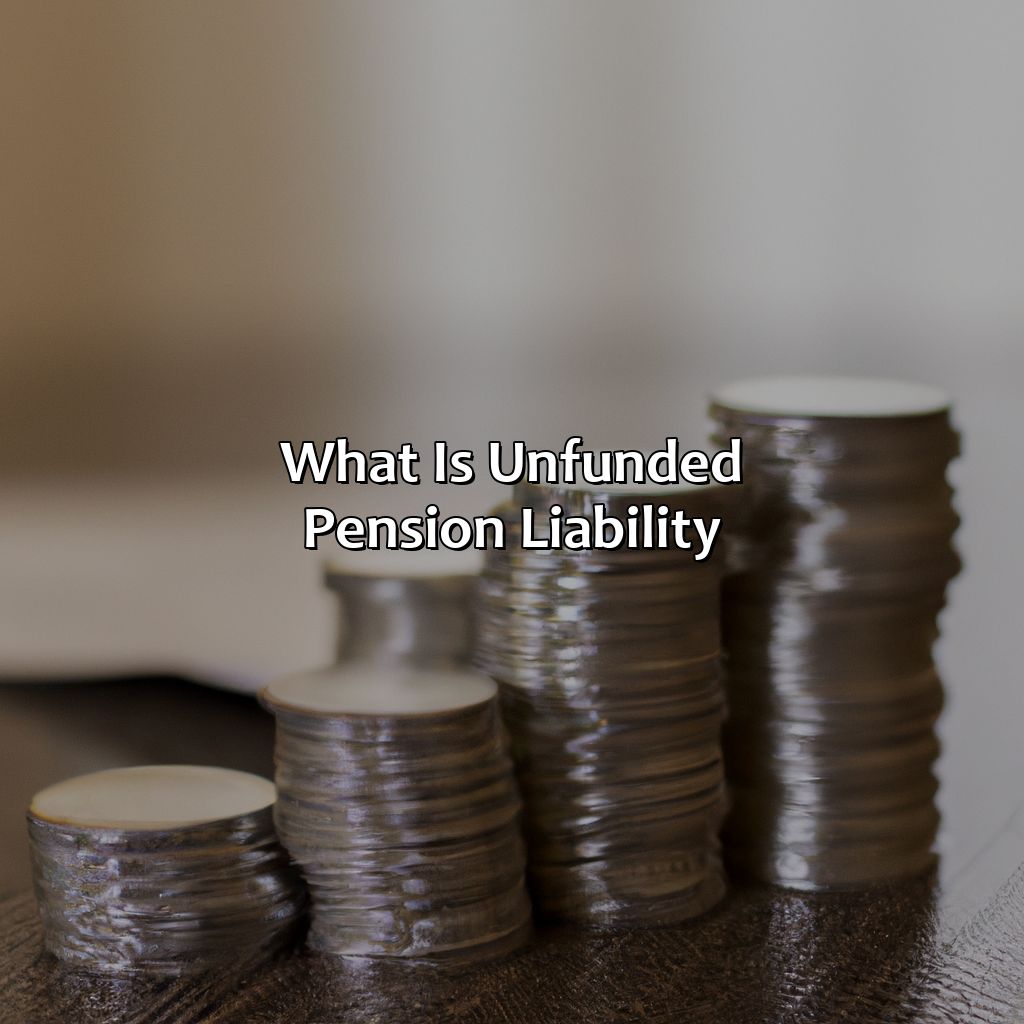What Is Unfunded Pension Liability?
Key Takeaway:
- Unfunded pension liability refers to the difference between the funds available in a pension plan and the amount required to cover all expected future pension payments to current and retired employees.
- The main causes of unfunded pension liability include insufficient contributions, economic downturns, and pension benefit enhancements.
- Unfunded pension liability can have a significant impact on governments, as they must find ways to meet their pension obligations without compromising other essential services or increasing taxes.
- To address unfunded pension liability, pension reform, increase in contributions, and budgetary adjustments can be taken.
Are you concerned about your future retirement plans? Unfunded pension liability is an important but complex concept to understand. You need to know how it affects your retirement plans and how to best prepare for it. Get the answers to these questions and more in this insightful blog.
Understanding Unfunded Pension Liability
Understanding the Concept of Unfunded Pension Liability
Unfunded pension liability refers to the amount of money that a company or government owes to their current and retired employees in pension benefits, but the funds set aside to pay these benefits are inadequate. This shortfall becomes a liability for the employer and can jeopardize their financial stability. Learn more about pension maximization.
More specifically, unfunded pension liability occurs when the amount required to fund current and future pension payments exceeds the amount of money available in the pension fund or account. This can happen due to various factors such as increased life expectancy, changes in interest rates, and inadequate contributions by the employer. To understand this better, one can look into what is commuted value of pension.
It is important for employers to accurately fund their pensions to avoid the risk of bankruptcy, inability to pay promised benefits, and other legal issues. In some cases, employers may choose to transfer the responsibility of pension funding to a third party to mitigate this risk. If you want to know more about pension liabilities, check out this article.
One example of the impact of unfunded pension liability is the case of the city of Detroit, which filed for bankruptcy in 2013, with a significant portion of their debt attributed to unfunded pension liabilities. This highlights the importance of proper pension funding and management for the sustainability of both private and public institutions.

Image credits: retiregenz.com by James Arnold
Definition and Explanation of Unfunded Pension Liability
Unfunded pension liability refers to the amount of money that a pension plan owes to its retirees or beneficiaries over time, but does not currently have the funds to pay for. This can occur when the amount of money paid into the pension plan by employees and employers is not enough to cover the pension benefits promised to retirees. Due to the long-term nature of pension obligations, it is common for pension plans to have some degree of unfunded liability.
To address this issue, pension plans may take steps to increase their funding levels, such as increasing contributions from employees and employers, reducing benefits, or investing in higher-yielding assets. However, failure to address unfunded pension liability can have serious consequences for both the pension plan and its beneficiaries, potentially leading to insolvency and reduced benefits for retirees.
If you want to know how a pension is paid out, it’s important to understand how a pension plan works and how it is funded.
It is important for individuals and organizations to be aware of the unfunded pension liability of any pension plan they are involved with or reliant upon, in order to make informed decisions and plan for the future. Don’t let unfunded pension liability catch you off guard and take steps to ensure that your pension plan is properly funded.
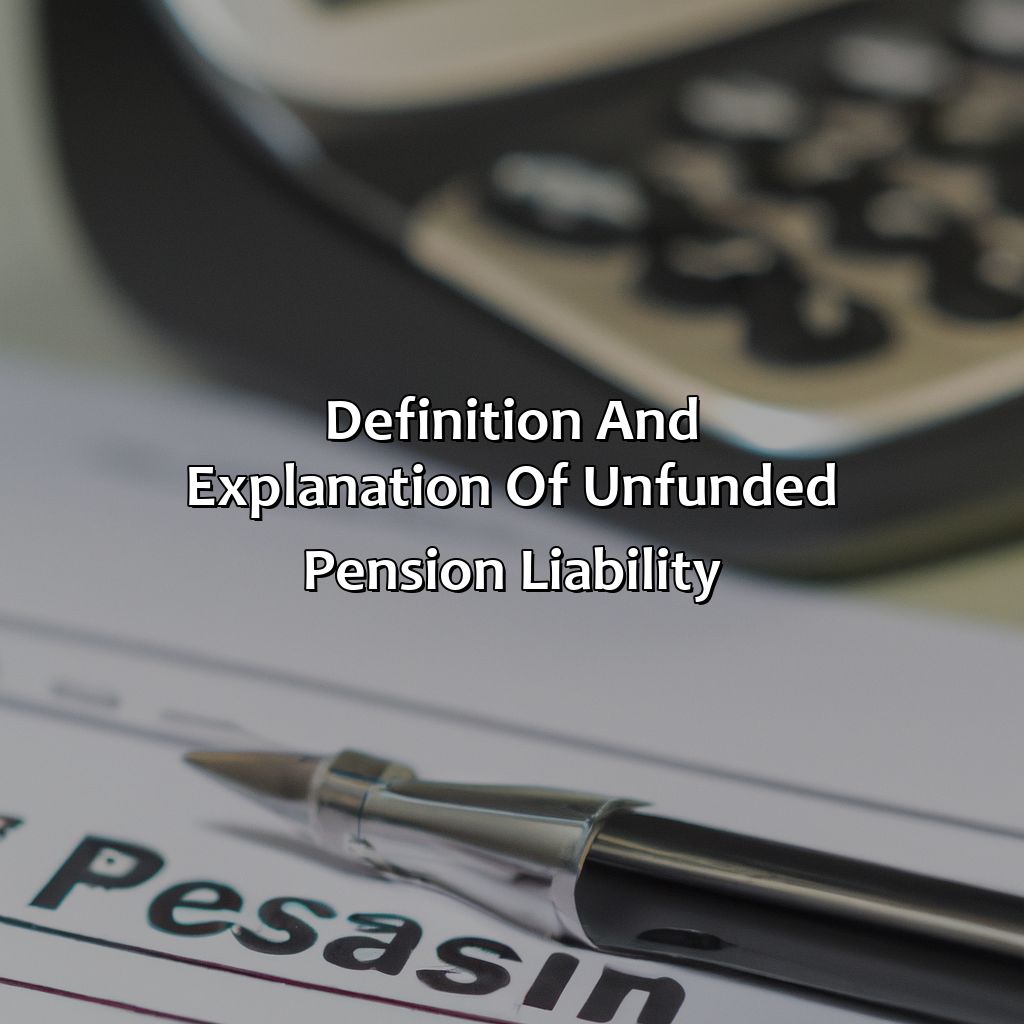
Image credits: retiregenz.com by Adam Duncun
Causes of Unfunded Pension Liability
Inadequate contributions, investment returns, and demographic changes cause the shortage of funds in pension plans. The shortfall in pension assets, which leads to unfunded pension liabilities, mostly arises from poor funding policies and a failure to keep pace with funding requirements. In some cases, overlooking actuarial assumptions and the use of inaccurate mortality rates may exacerbate the situation.
Furthermore, the imbalance between the number of active contributors and people entitled to retirement benefits negatively affects the funding of pension schemes, resulting in unfunded pension liabilities. Aging populations and decreasing birth rates have had a considerable impact on the overall pension system in many countries.
Pro Tip: Pension regulators should frequently scrutinize pension plans to ensure adequate funding. Employers and employees should also contribute regularly to the plan to avoid unfunded pension liabilities.
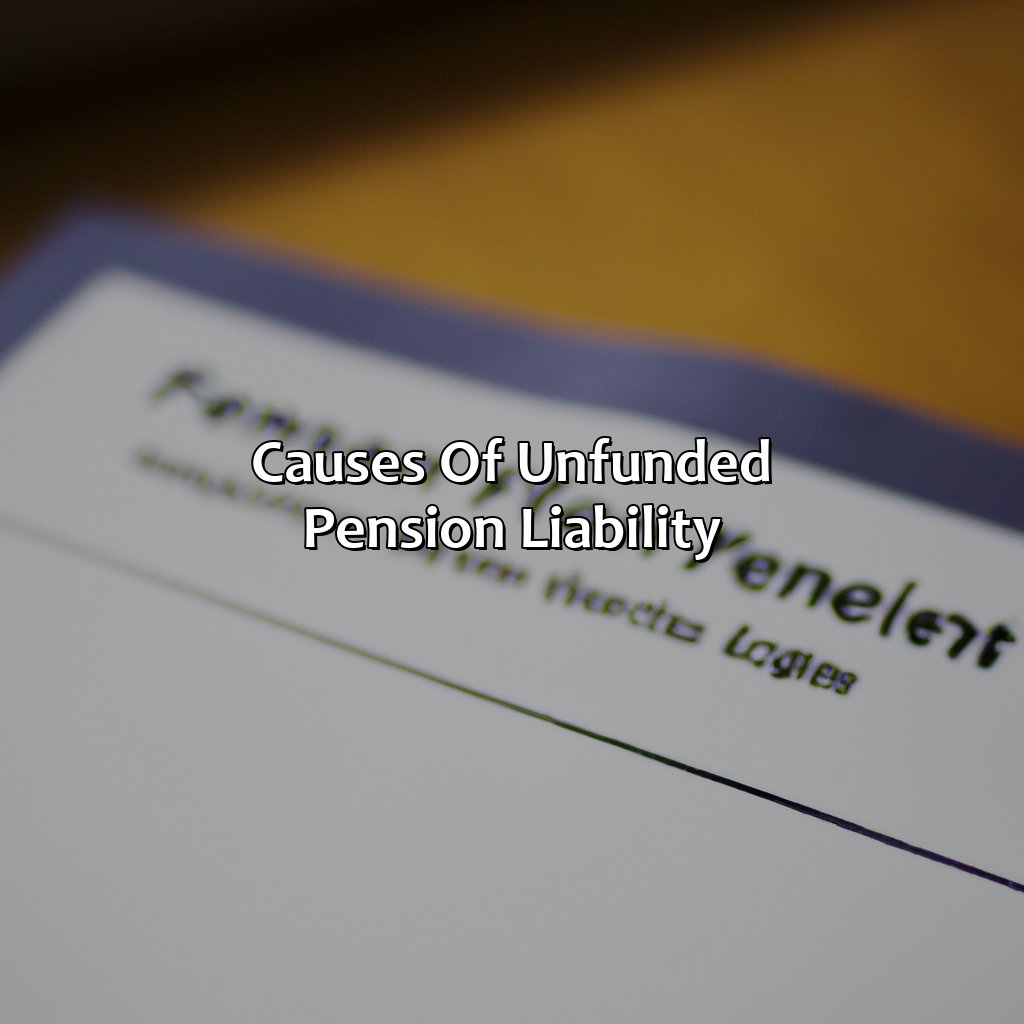
Image credits: retiregenz.com by Joel Jones
Impact of Unfunded Pension Liability
The impact of unfunded pension obligations can be significant and long-lasting. Unfunded pension liability refers to a situation in which a pension plan’s assets are not sufficient to cover the future retirement benefits promised to plan participants. This can lead to increased costs for employers, reduced retirement benefits for employees, and even bankruptcy for some pension plans. It can also have ripple effects throughout the economy, as the pension funds are often major investors in financial markets. Thus, unfunded pension liabilities can have a substantial impact on the financial stability of retirement systems, employers, and the broader economy.
Pension funds have become increasingly common in the modern economy as stakeholders look for ways to provide retirement benefits for employees. However, many pension funds are underfunded, in part because of weak investment returns and poor management. As a result, employers may need to contribute more money to the pension fund to cover the shortfall in benefits, diverting funds from critical business operations. This can lead to reduced investment, decreased competitiveness, and even bankruptcy in some cases. To learn more about where pension money comes from, click here.
The impact of pension debt can be seen in the example of Detroit, which declared bankruptcy in 2013. The city was grappling with over $18 billion in unfunded pension liabilities, weighing down the city’s finances and making it difficult to provide essential services to residents. This example shows how unfunded pension liabilities can have severe financial and social consequences, underscoring the need for adequate pension funding and management.
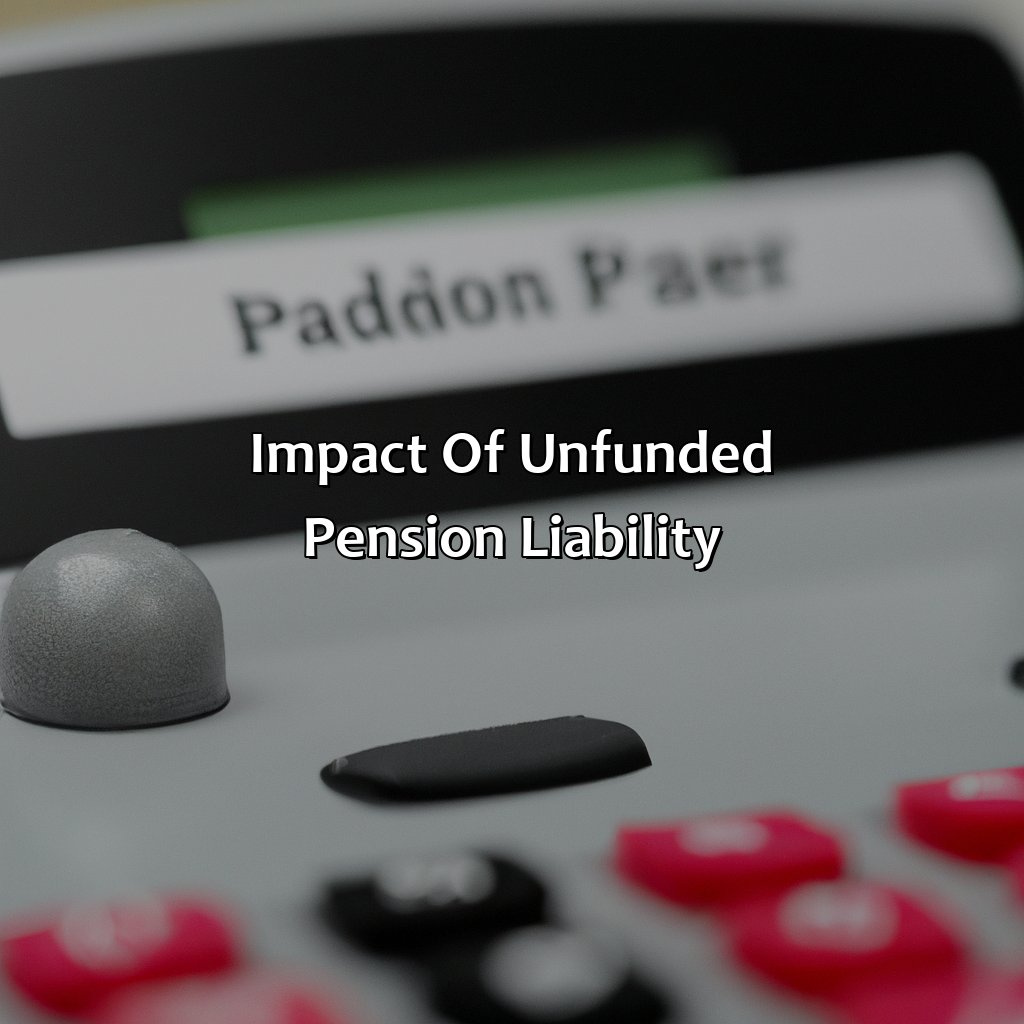
Image credits: retiregenz.com by Harry Woodhock
Addressing Unfunded Pension Liability
Addressing Unfunded Pension Liability
Unfunded pension liability indicates the shortfall between the funds required to pay promised pension benefits and the actual assets that are available for the same. To address such liability, employers can take proactive steps to fund pension contributions and adopt strategies to manage investments prudently.
By increasing contributions, employers can aid in lowering the pension funding gap. Additionally, they can explore innovative investment strategies focused on earning desired returns while mitigating risks associated with the same. If you’re wondering how does a pension loan work, it’s important to first understand the concept of unfunded pension liability.
To ensure the sustainability of pension plans, employers can also explore alternative retirement arrangements, including shared-risk models and defined contribution plans. These strategies can help shift responsibility and risk associated with retirement planning to individual employees, thereby reducing the burden on employers. Learn more about pay as you go pension plan.
To sum up, proactively addressing unfunded pension liability through multiple approaches can aid in making pension plans sustainable, providing adequate benefits for employees while managing the costs for the employer.
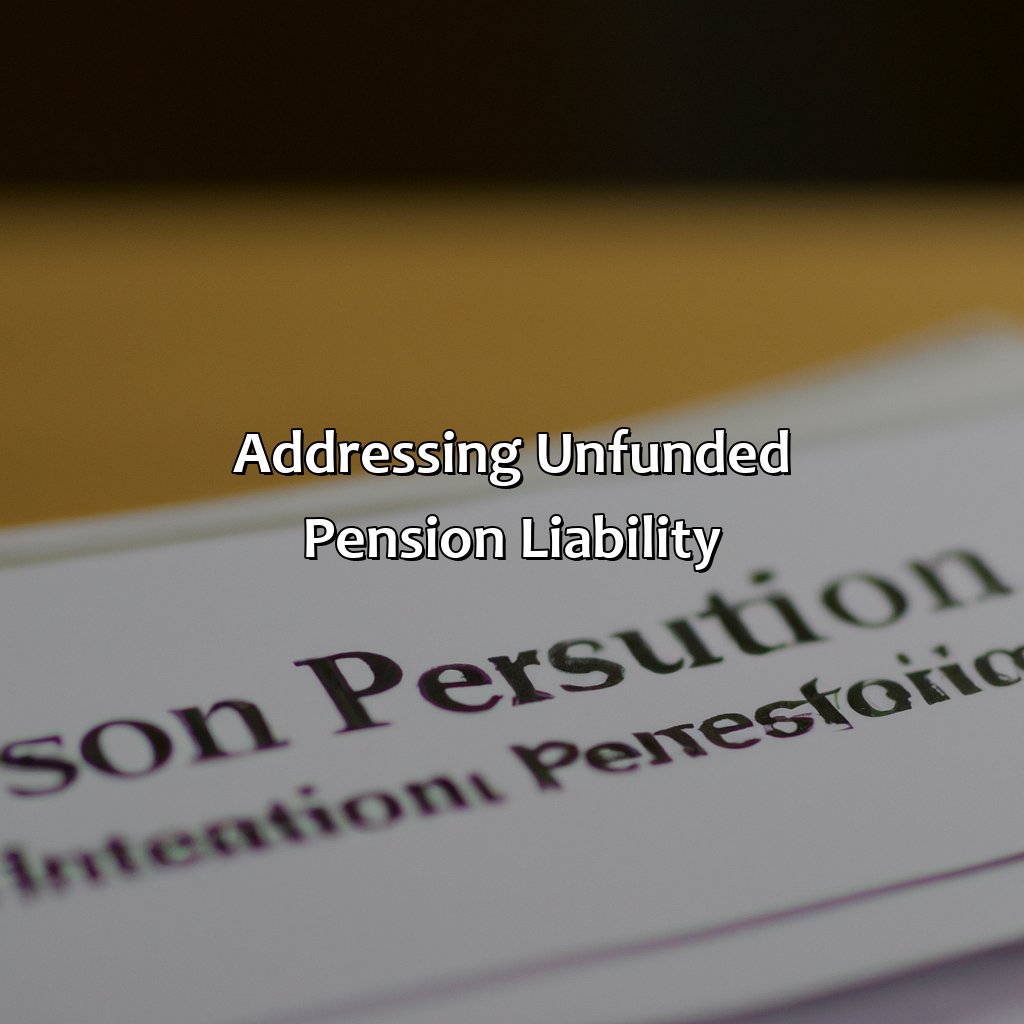
Image credits: retiregenz.com by David Washington
Some Facts About Unfunded Pension Liability:
- ✅ Unfunded pension liability refers to the amount of pension payments owed to current and future retirees that is not currently covered by pension plan assets. (Source: Investopedia)
- ✅ Unfunded pension liability is a major financial burden for many state and local governments. (Source: The Balance)
- ✅ The unfunded pension liability for state and local governments in the US was estimated to be $1.28 trillion in 2020. (Source: Pew Charitable Trusts)
- ✅ Unfunded pension liability can affect the credit rating of governments, making it more expensive for them to borrow money. (Source: Forbes)
- ✅ Solving the problem of unfunded pension liability often requires a combination of increasing contributions from employers and employees, reducing benefits, and/or increasing investment returns. (Source: Brookings Institution)
FAQs about What Is Unfunded Pension Liability?
What is unfunded pension liability?
Unfunded pension liability refers to the amount of money that a pension plan owes to its retired or current employees, but cannot pay out because the plan is underfunded.
How does unfunded pension liability occur?
Unfunded pension liability occurs when the money accruing to a pension plan is not enough to cover all of the benefits that have been promised to employees. This tends to happen when the fund’s investments underperform or when the benefits promised to employees are higher than the funds that have been accumulated.
What are the consequences of unfunded pension liability?
Unfunded pension liability can have a serious impact on a company’s finances and can even lead to bankruptcy. It can also affect employees who may not receive the full benefits they were promised or may lose some of their benefits.
Can unfunded pension liability be resolved?
Unfunded pension liability can be resolved through various means, including increasing contributions from employees or the company, reducing benefits promised to employees, or investing funds more effectively. In some extreme cases, bankruptcy may be the only option.
What is the difference between funded and unfunded pension liability?
Funded pension liability refers to a pension plan having enough funds to meet its financial obligations to employees. Unfunded pension liability, on the other hand, means that the pension plan does not have sufficient funds to meet its obligations and is therefore underfunded.
How can businesses prevent unfunded pension liability?
Businesses can prevent unfunded pension liability by making sure their pension plan is adequately funded from the beginning. Additionally, businesses can regularly review their investment strategies, periodically increase contributions from employees or the company, and adjust benefits promised to employees as needed.
